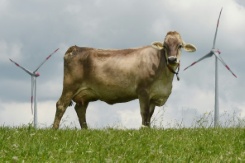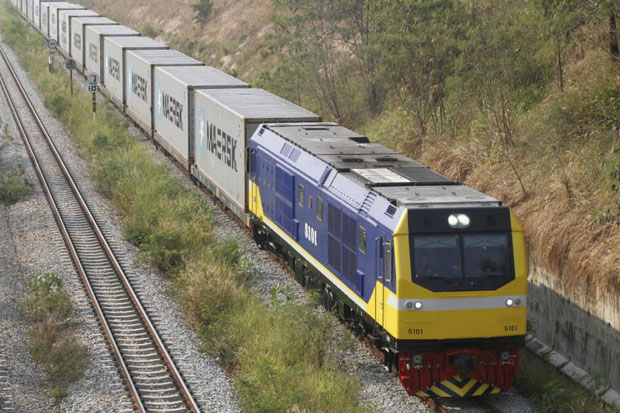
“I love them,” says Thomas Pfluger, a local resident, gazing at the windmills jutting out above the tree-tops. “To look at them, it makes me proud.”
Pfluger’s home village, with its old Catholic church and traditional beer garden, may be rural Bavaria at its most idyllic, but it’s also at the cutting edge of Germany’s green energy revolution.
Known as the “Renewables Village,” it uses mainly wind, solar and biomass to meet all its electricity needs, and sells the rest back into the national grid at a profit.
Like many other communities in Germany, Wildpoldsried took advantage of generous subsidies and price guarantees that were rolled out in recent years to boost alternative energy.
To ensure local acceptance, Wildpoldsried relied on a simple idea: to involve the entire village and spread the benefits among its people.
Like 300 other locals, Pfluger, a 55-year-old IT developer, put his money into the wind farm, which offered guaranteed, above-market-rate returns for 20 years.
“I invested 100,000 euros ($110,000) in the wind turbines,” he said. “Every year, I get about six percent of this amount as profit.”
Village mayor Arno Zengerle, 59, stressed that “the participation of the citizens is the most important thing”.
“They must profit from the renewable energy. If only private investors from the outside took part, it wouldn’t work.”
So far business has been good. Last year, the village produced five times more electricity than it consumed.
The goal for this year is to raise that ratio to seven-fold.
– ‘Logical choice’ –
Martin Hartmann, who lives in a beautiful old house with flower boxes in a cozy village street, opted for solar and has covered his garage roof with photovoltaic panels.
“It was a logical choice,” said the 33-year-old printer.
“I was born here, I grew up with the idea that Wildpoldsried is the ‘energy village’, so I got interested in it very early,” he said, his eyes fixed on real-time power stats on his smartphone.
Across the village, all public buildings are energy self-sufficient or produce a surplus, which earn the municipality several million euros a year.
“In other words, local taxes are not very high here,” smiled Zengerle, of the conservative Christian Social Union party.
Zengerle often hosts foreign delegations of diplomats, experts and journalists — about 100 visits a year — to inform them about the clean energy model.
Some companies have been drawn to Wildpoldsried, including Sonnen GmbH, which makes batteries for storing excess wind and solar power, and which employs 140 people here.
Its founder and boss Christoph Ostermann, 45, said: “When I look out the window, I see solar panels on a lot of roofs, windmills that are spinning.
“Wildpoldsried has been (energy) independent for a long time, so for a company like ours, it’s inspiring.”
– Golden age –
The village benefited from the golden age of generous grants, guaranteed prices and priority access to the grid that were the key planks of the energy transition.
As Germany is phasing out nuclear energy and, more slowly, trying to leave behind carbon fuels, the scheme has raised the share of clean energy to about one third of national consumption.
By mid-century this is meant to rise to 80 percent. To get there, Germany has just shifted gear to a more market-based approach that is meant to put a lid on costs.
The flipside of the energy transition has been that the cost of subsidised green power has been passed onto households who pay for it through surcharges on their power bills.
In future, providers of green power will have to bid in competitive tenders, letting market forces shape the way ahead.
Environmental groups fear for the future of the energy transition, and a shift away from local cooperatives to big business.
“In our country, renewable energy is at risk of going backwards,” said the mayor. “There is a consensus on the idea of getting out of nuclear energy, but not on its replacement.”
Wildpoldsried, however, is on the safe side, having already locked itself into a green energy system and pushing on with more reforms, including switching its street lighting to highly-efficient LED bulbs.
Pfluger said he has never regretted the choice, despite some naysayers.
“Some people say that wind turbines are not beautiful,” he shrugged. “I prefer to have wind turbines in my area rather than a nuclear power plant.”
Source: http://m.bangkokpost.com/news/1034837
